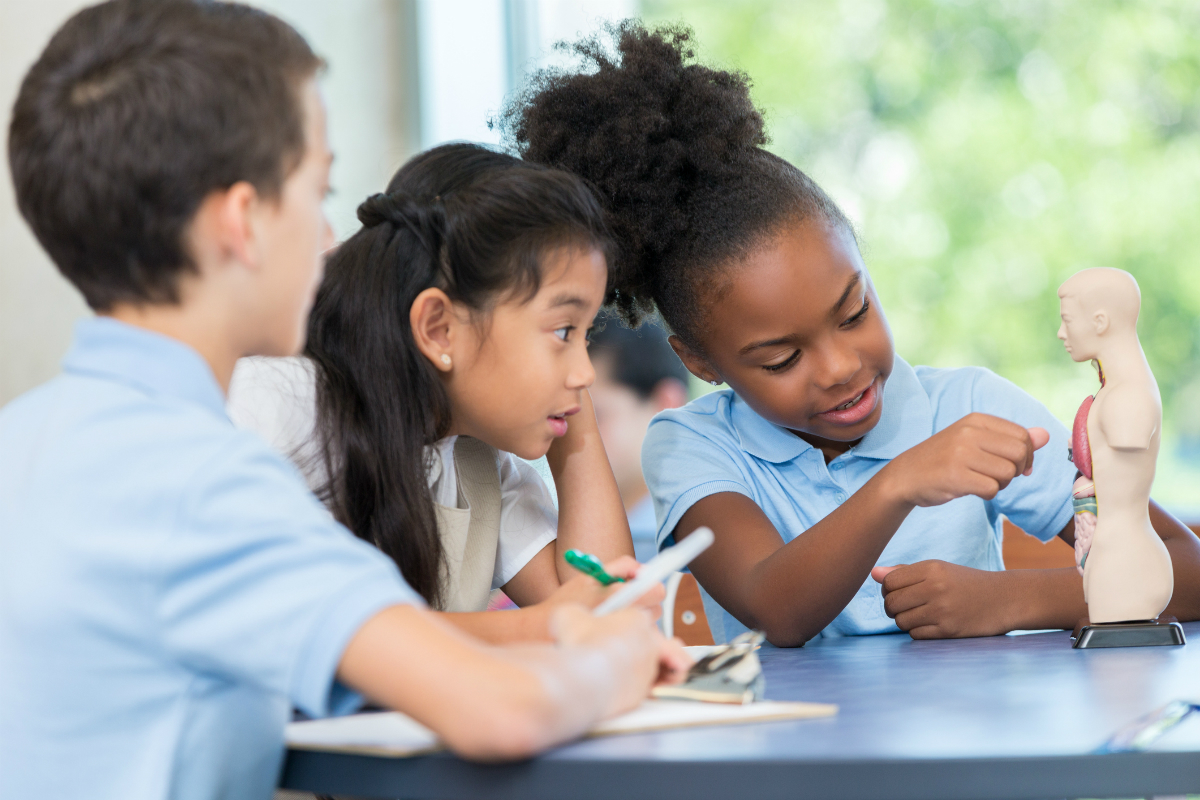A new guide can serve as inspiration both technically and artistically for local educational agencies interested in outdoor learning.
Los Angeles County Office of Education released “Design Guidelines for Outdoor Learning Environments” in June. The document was created with support from HMC Architects and engineering and construction experts following months of distance learning.
“Outdoor learning offers students a range of benefits, from enhancing engagement to reducing stress and promoting physical and psychological well-being,” said Debra Duardo, Los Angeles County superintendent. “Yet far too many of our young people, particularly those in inner-city and low-income communities, have not had access to outdoor learning environments and green space — not before nor during the pandemic. Increasing opportunities for outdoor learning is essential to advancing educational equity.”
Topics covered include professional learning and student engagement using outdoor environments, design guidelines, components of learning spaces, funding and public bid, and testing the design process.
“[The guidelines] are a valuable resource for educators and facilities professionals in developing effective outdoor learning environments that serve the needs of their school communities,” Duardo continued.
When approaching the idea, LEAs should be sure to address concern or resistance from the community. The guidelines recommend having genuine conversations about reluctance and getting input about elements of a project to help ease tensions.
Logistically, “a flexible approach is needed in the less predictable conditions of outdoor learning.” Focusing on things you can control like lesson plans, equipment and behavioral support strategies are important.
Keeping in mind things you cannot control — such as weather, noise or air quality — is another component of planning. “As a leader, it cannot be overstated how crucial your positive mindset about the logistics of outdoor learning is in helping students develop resiliency and adapt to external conditions,” the guidelines state.
The two primary approaches to outside teaching include conducting regular lessons outside and lessons focused on phenomena found outside. Both are possible given the proper conditions. In mostly mild California climate, hosting regular lessons outdoors is typically doable no matter the season or subject.
“The other approach is to use the phenomena found outside (i.e., writing haikus about sounds or smells, making a sundial as part of a lesson on planetary movement, observing and illustrating insects, making a visual map of sounds, or even measuring the energy transfer through conduction of sitting on a hot or cold surface),” the document states. “Using immediate, experiential phenomena, like the sun casting shadows, is the magic that makes learning more powerful. With the array of natural phenomena outside, both planned and spontaneous lessons are much more possible.”
Distractions can occur more easily when outside so ways to pivot lessons to account for circumstances are discussed as well as other tips for teaching away from the classroom.
Components and design
When it comes time to begin the design process, identifying project leaders and planning for stakeholder engagement are first steps. “The leadership team’s main role is to build consensus among the stakeholders about the project vision,” according to the guide.
Initial planning meetings should establish a leadership team; goals and objectives for the outdoor learning environment; a project schedule, budget and funding sources; and a stakeholder engagement strategy.
Site assessments should be done at locations of interest, as each will offer its own opportunities and challenges. From there, LEAs can gather input from stakeholders, develop design concepts and educational goals as well as plan for safety protocols and professional development related to the new spaces.
Components of the space detailed in the guidelines are seating, shading and protection, teaching tools and resources, space definition, site landscaping, infrastructure and construction. Examples of how to handle each are listed.
“To develop the most universal outdoor learning environments for all campuses and sites, we studied indoor classrooms and identified the fundamental components that make-up an indoor classroom,” the document states. “Each of these components can work together in various ways to form a variety of outdoor learning environments. We used cost, time to install, and flexibility factors to analyze options for each component. Determining your school community’s most important factors will help you to identify what component options will work best for your needs and your school.”
Details on funding and public bidding and testing the design process are also laid out in LACOE’s guide available here.





